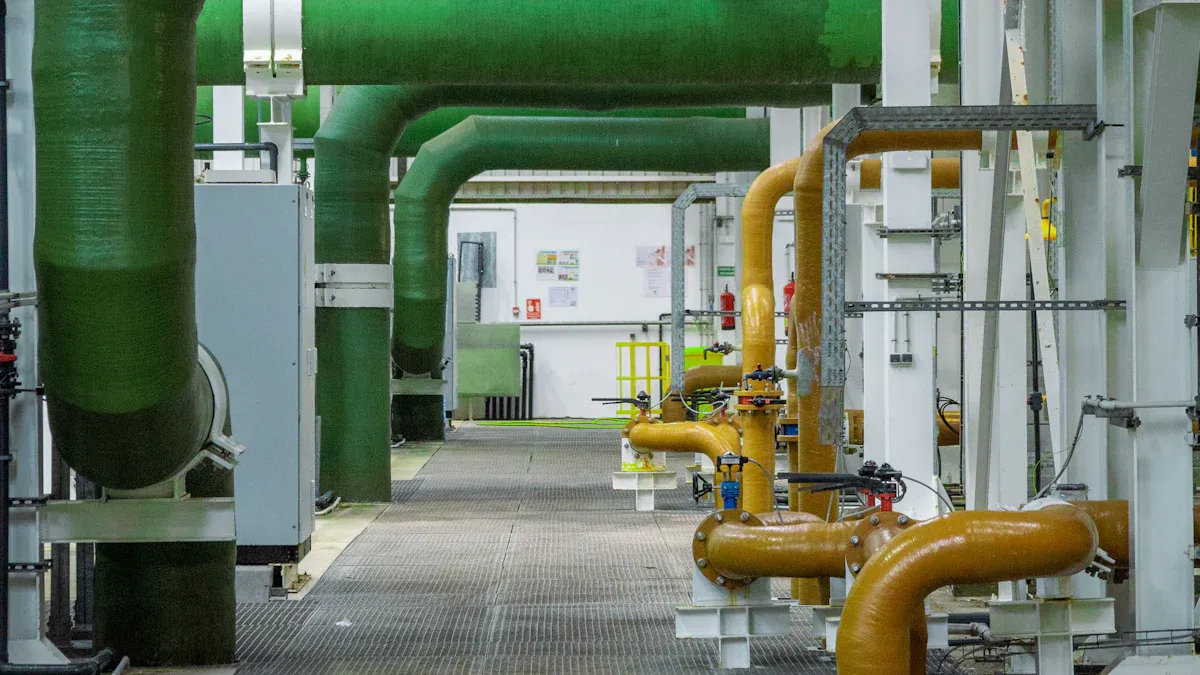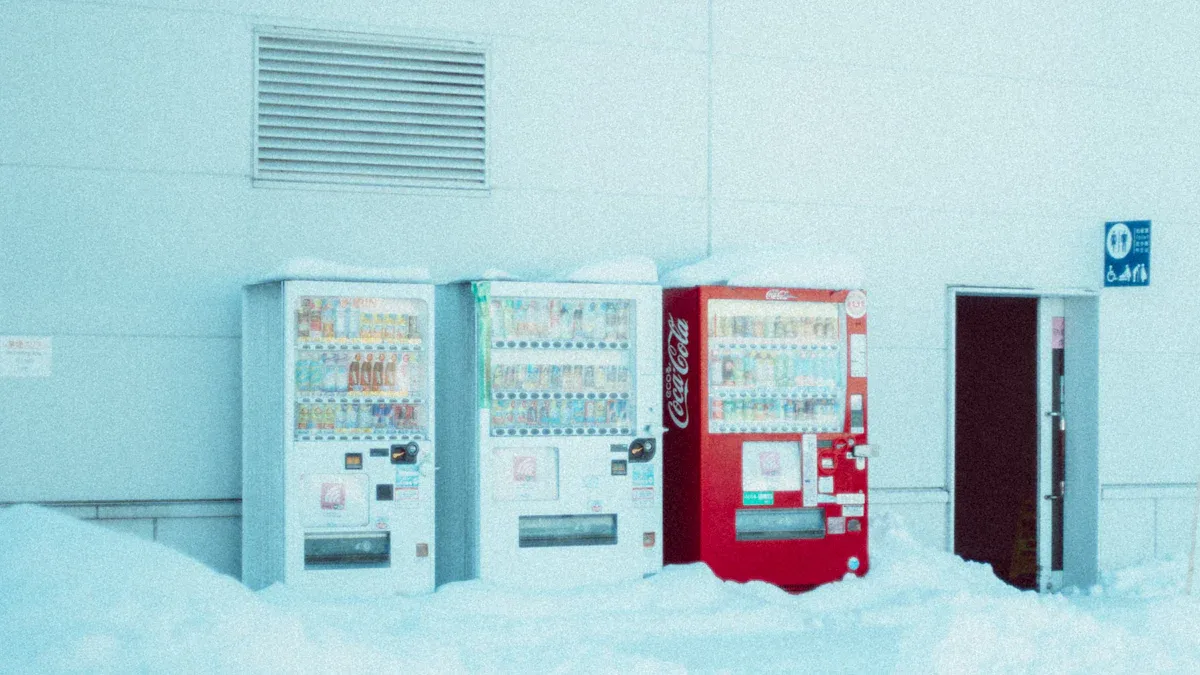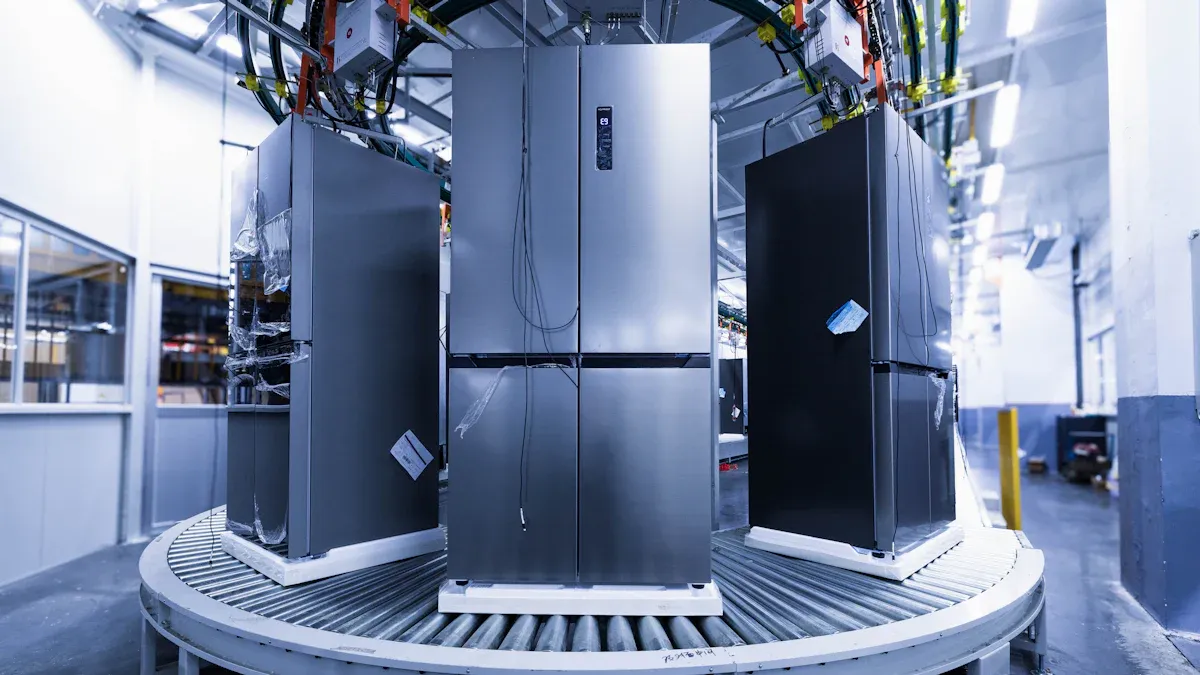What Are Low Temperature Chillers and How They Work

A low temperature chiller is a cooling system for liquids. It lowers liquid temperatures below freezing. These systems are used in industries needing exact temperature control. They keep processes cool and running smoothly. This is important for work that needs freezing temperatures.
Low temperature chillers are key in areas like medicine and chemicals. They help keep tools and products in the best condition. Using one gives steady cooling, which is crucial for good results.
Key Takeaways
Low temperature chillers make liquids colder than freezing. They help control temperatures for industries like healthcare and food.
These chillers save energy, last long, and keep products good. This can help businesses save money.
There are different chillers, like air-cooled and water-cooled ones. Each works best for certain jobs and places.
Taking care of chillers often keeps them working well. It also helps them last longer and use less energy.
Picking eco-friendly chillers with safe refrigerants helps the planet. They still cool things effectively.
What Is a Low Temperature Chiller?

Definition and Purpose
A low temperature chiller is a machine that cools liquids below freezing. These systems are used in industries needing exact temperature control. They help keep processes stable in very cold conditions. For example, in medicine, they keep materials at the right temperature to stay effective.
Using a low temperature chiller gives steady cooling. This makes them important for work where small temperature changes can cause big problems or damage products.
Key Features and Benefits
Low temperature chillers have features that make them great for industries. Here are some key points:
Wide Temperature Range: They can cool liquids to -40°F or lower, depending on the model.
Precision Control: You can set and keep exact temperatures for best results.
Durability: They are made strong to handle tough work environments.
Energy Efficiency: New designs use less energy, saving money on costs.
These chillers do more than just cool. They make processes reliable, improve product quality, and lower the chance of equipment breaking. For example, in food production, they keep items fresh during making and storage.
Types of Low Temperature Chillers
There are different kinds of low temperature chillers, each for specific needs. Knowing these types helps you pick the right one:
Air-Cooled Chillers: Use air to remove heat. Good for places with little water.
Water-Cooled Chillers: Use water to cool. They work better than air-cooled ones but need water.
Portable Chillers: Small and easy to move. Great for small jobs or temporary use.
Split-System Chillers: Have separate parts for cooling and heat exchange. Flexible to install.
Each type has its own benefits. Air-cooled chillers are easier to care for. Water-cooled ones cool better. By checking your needs, you can choose the best one.
How Does a Low Temperature Chiller Work?
The Cooling Process Explained
A low temperature chiller cools liquids by removing their heat. First, the liquid enters the chiller system. Inside, the machine uses a refrigeration cycle to cool it. This cycle has four steps: compression, condensation, expansion, and evaporation.
In compression, the refrigerant gas is squeezed, making it hotter. Then, the hot gas moves to the condenser, where it loses heat to air or water. As it cools, the gas turns into a liquid. Next, the liquid refrigerant goes through an expansion valve, lowering its pressure and temperature. Finally, the cold refrigerant enters the evaporator. Here, it absorbs heat from the liquid being cooled. This cycle repeats to keep the liquid at the needed low temperature.
Key Components of a Low Temperature Chiller
Several parts work together to make a low temperature chiller work:
Compressor: Squeezes the refrigerant to start cooling.
Condenser: Removes heat and turns refrigerant into liquid.
Expansion Valve: Lowers refrigerant pressure and temperature.
Evaporator: Takes heat from the liquid being cooled.
Refrigerant: Special fluid that moves heat through the system.
Each part is important for the chiller to work well and reliably.
The Role of Refrigerants in Achieving Low Temperatures
Refrigerants are key for a low temperature chiller to work. These fluids can absorb and release heat easily. Modern refrigerants are made to work at very low temperatures. This makes them perfect for industries needing precise cooling.
The refrigerant you choose affects how well the chiller works. Many chillers now use eco-friendly refrigerants to help the environment. Picking the right refrigerant gives good cooling and lowers environmental harm.
Industrial Applications of Low Temperature Chillers

Low temperature chillers are important for many industries. They provide exact cooling to keep products good and processes efficient. Below are three main areas where these chillers are used.
Pharmaceutical Industry
Keeping the right temperature is very important in medicine. Medicines, vaccines, and other items need cold storage and transport. A low temperature chiller gives steady cooling below freezing. This keeps medicines safe and working well.
Making medicines also needs chillers for freeze-drying and chemical mixing. These steps need exact temperatures to make high-quality products. Using a chiller stops contamination and meets safety rules.
Tip: Pick chillers with smart temperature controls and green refrigerants for medicine use.
Food and Beverage Industry
Food and drinks need chillers to stay fresh longer. Chillers cool liquids like milk, juice, and beer during making. They also keep storage and transport cold to stop spoiling.
For example, ice cream needs chillers to freeze evenly for smooth texture. Breweries use chillers to control beer-making temperatures for better taste and quality.
Using chillers in food production improves quality and reduces waste. This helps meet customer needs and save money.
Chemical and Petrochemical Industry
Chemical work needs exact temperatures for safety and good results. Chemical reactions make heat, which can be risky if not cooled. Chillers remove extra heat and keep reactions stable.
Chillers also cool tools like reactors and distillation columns. This stops equipment from breaking and keeps work smooth. They also store chemicals that need freezing to stay safe.
Note: Choose chillers made from strong materials to handle harsh chemicals.
Manufacturing and Other Uses
Low temperature chillers are important in factories and other fields. They provide exact cooling to keep products good and work efficient. These chillers are used in many areas, like metalwork and electronics.
In metalwork, chillers cool cutting fluids and machines. This stops overheating, which can harm tools and shorten their use. Keeping machines cool helps make smoother and more accurate parts. For instance, in CNC machining, steady cooling makes precise parts every time.
Electronics making also needs these chillers. They keep sensitive parts cool during production. Without cooling, parts can get too hot and break. Using a chiller protects circuits and makes products more reliable.
Chillers are also used in labs, data centers, and ice rinks. Labs use them to keep experiments and tools at the right temperature. Data centers cool servers to stop overheating and downtime. Ice rinks need chillers to keep ice frozen and smooth for skating.
Tip: Pick a chiller with the right cooling power, energy use, and upkeep needs. This helps you get the best results for your work.
Adding low temperature chillers to your work boosts productivity. They also protect tools and give steady results. Their many uses make them a key tool in different industries.
Why Are Low Temperature Chillers Important?
Energy Efficiency and Cost Savings
A low temperature chiller helps save energy and cut costs. Newer chillers use smart technology to cool liquids better. They need less power but still provide exact cooling. This lowers energy bills and reduces expenses.
Some chillers have variable speed compressors. These adjust cooling based on what’s needed, avoiding waste. Over time, this can save a lot of money. Buying an energy-saving chiller improves performance and reduces costs.
Tip: Keep your chiller well-maintained to save even more energy.
Ensuring Product Quality and Process Reliability
A low temperature chiller helps keep products high-quality. It controls temperatures to stop spoilage or damage during production. For example, in food making, chillers keep items fresh and frozen goods smooth.
Chillers also stop machines from overheating. This prevents breakdowns and keeps work on schedule. Stable cooling ensures smooth operations and protects your tools and materials.
Note: Pick a chiller with precise controls for consistent results.
Environmental Considerations
Modern chillers are made to be eco-friendly. Many use refrigerants that are safer for the ozone layer. Choosing these chillers helps lower greenhouse gas emissions.
Energy-efficient chillers also use less electricity. This means fewer fossil fuels are burned, reducing pollution. Using these chillers helps the planet and supports green goals.
Switching to a chiller with eco-friendly features is good for business and the Earth. It’s a step toward a greener future.
Reminder: Look for ENERGY STAR-certified chillers to meet environmental standards.
A low temperature chiller is very useful for industries needing exact cooling. It keeps temperatures steady, helping work stay smooth and reliable. Adding these chillers to your tasks can improve product quality and save energy. Whether in medicine, food making, or factories, this tool helps by giving constant and green cooling.
Takeaway: Buying a low temperature chiller makes work better and helps the planet.
FAQ
What industries benefit the most from low temperature chillers?
Low temperature chillers are used in medicine, food, chemicals, and factories. They cool processes, protect tools, and keep products good.
Tip: If your work needs exact temperatures, chillers help with better results.
How do I choose the right low temperature chiller for my needs?
Think about cooling power, energy use, refrigerant type, and upkeep. Pick a chiller that fits your specific job needs.
Note: Small portable chillers are great for small jobs. Water-cooled ones work better for big tasks.
Are low temperature chillers environmentally friendly?
Modern chillers use green refrigerants and save energy. These features lower pollution and use less power.
Reminder: Look for ENERGY STAR chillers to meet eco-friendly rules.
How often should I maintain my low temperature chiller?
Take care of your chiller often. Clean parts, check refrigerant, and inspect monthly. Get a professional check-up once a year.
Tip: Keeping your chiller clean helps it last longer and saves energy.
Can low temperature chillers handle extreme conditions?
Yes, many chillers are tough and work in hard places. Choose strong models with advanced controls for tough jobs.
Emoji Insight: 🛠️ Strong chillers keep working well, even in rough conditions.
See Also
A Comprehensive Guide To Water Chiller Unit Functionality
Proven Strategies To Maximize Walk-In Chiller Performance
Key Differences Between Cold Rooms And Cool Rooms
Exploring The Purpose And Functionality Of Cold Rooms
Comparing Container Cold Rooms With Conventional Cold Storage

